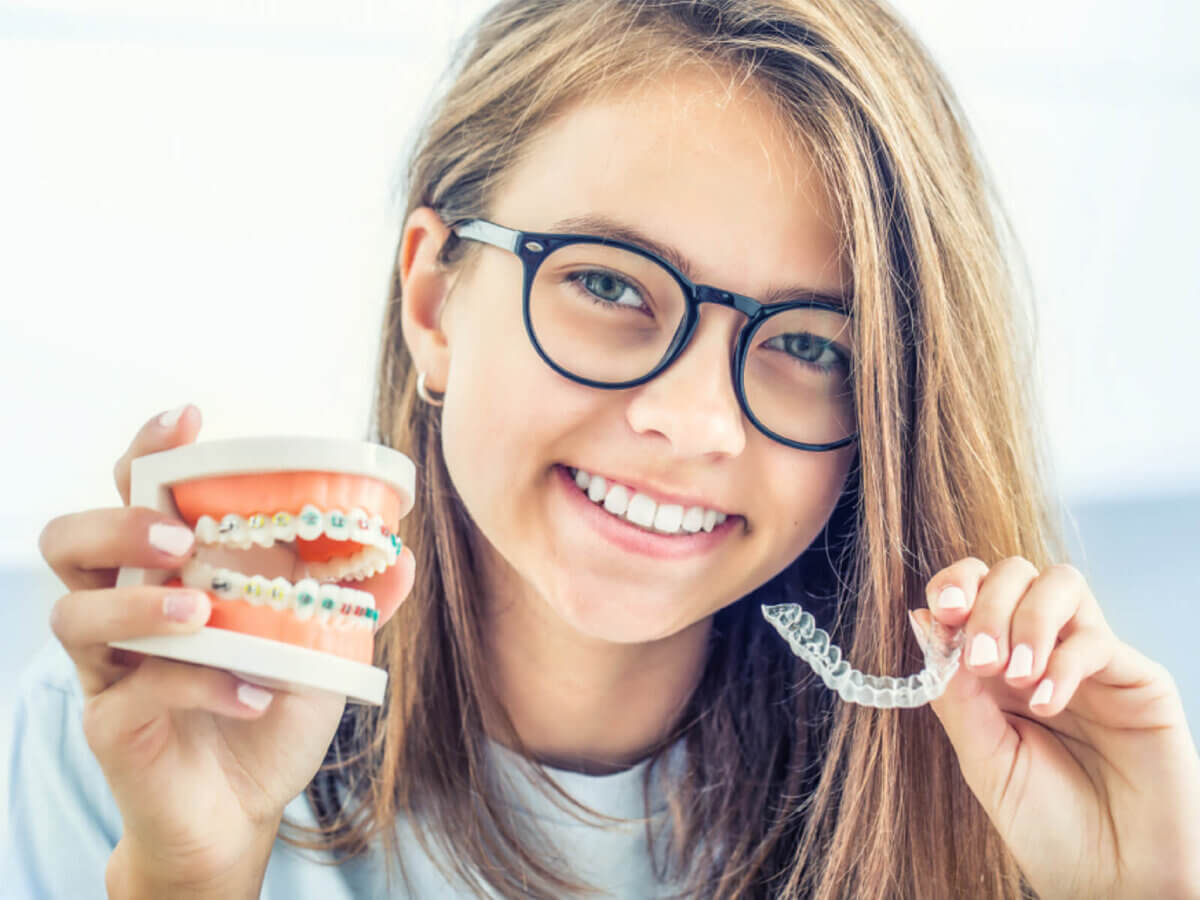Blog
Dental hygiene tips for healthy teeth & gums

A Guide To Straightening Your Smile: Orthodontic Options
A straight, well-aligned smile not only improves your appearance but is also essential for maintaining good dental health. Fortunately, contemporary orthodontics offers a variety of options for achieving a straighter smile, catering to different interests and lifestyles. Traditional braces and Invisalign are two popular choices. In this guide, we’ll explore various orthodontic alternatives, including their benefits, concerns, and what to expect during the straightening process.
Traditional Braces
Traditional braces consist of metal brackets affixed to each tooth, linked by wires. The wires are periodically adjusted to exert pressure on the teeth, gradually moving them into the ideal position.
Benefits:
- Traditional braces address many orthodontic issues, including severe misalignments and complex bite problems.
- The results are predictable and reliable, as braces apply controlled and consistent pressure.
- Traditional braces are often less expensive than other orthodontic treatments.
- Being fixed to the teeth, traditional braces eliminate concerns about compliance.
Considerations:
- Aesthetics: The visibility of metal brackets and wires may be a concern for those who value appearance.
- Maintenance: Proper oral hygiene is crucial with braces. Cleaning around brackets and wires can be more time-consuming and challenging.
- Discomfort: It’s common to experience discomfort or irritation from the brackets and wires, especially following adjustments.
- Dietary Restrictions: Some foods, particularly hard or sticky items, may need to be avoided to prevent damage to the braces.
Invisalign
Invisalign involves a series of clear, custom-made aligners that gradually move teeth into the desired position. Each set of aligners is worn for a specific period before progressing to the next set.
Benefits:
- Aesthetic Appeal: Invisalign aligners are nearly invisible, making them popular among those seeking a more discreet orthodontic treatment.
- Removability: The aligners are removable, facilitating easy oral hygiene and the freedom to eat a variety of foods.
- Comfort: Invisalign aligners are made of smooth, soft plastic, which is gentle on the cheeks and gums.
- Treatment Predictability: Advanced technology allows for precise planning, offering a clear roadmap for the entire treatment process.
Considerations:
- Invisalign requires patients to wear their aligners for 20-22 hours a day. Compliance is crucial for achieving the desired outcomes.
- While Invisalign can address many orthodontic issues, it may not be suitable for severe or complex cases.
- Depending on the specific case and treatment duration, Invisalign may have a higher upfront cost than traditional braces.
- Sometimes, small attachments or buttons may be needed to assist specific tooth movements. Although tooth-colored, they can be noticeable.
Orthodontic Treatment: What to Expect
Regardless of the orthodontic method chosen, the overall process of aligning your teeth involves the following stages:
Evaluation and Consultation:
- Your orthodontist will conduct a comprehensive examination, including X-rays and impressions, to assess your dental health and the issues needing attention.
- A personalized treatment plan will be created based on your specific needs.
Initiation of Treatment:
- For traditional braces, brackets will be attached to your teeth, and wires fastened to begin the alignment process.
- During Invisalign treatment, you will receive a series of custom aligners to wear before progressing to the next set.
Regular Adjustments or Aligner Changes:
- Traditional braces require periodic adjustments to tighten the wires and continue the progressive movement of your teeth.
- Invisalign involves changing your aligners every two weeks, as each set is designed for specific tooth movements.
Progress Reporting:
Your orthodontist will monitor your progress through regular check-ups during your treatment.
Treatment plans may be adjusted as needed to achieve the best results.
Treatment Completion:
- Once your teeth have reached the appropriate alignment, your orthodontist will remove your braces or conclude your Invisalign therapy.
- Retainers may be recommended to prevent teeth from shifting back to their original positions.
Making the Best Decision for You
When deciding between traditional braces and Invisalign, consider your specific needs. Opt for traditional braces if you have significant misalignments, prefer a lower upfront cost, and desire a treatment option that doesn’t heavily rely on patient compliance.
Alternatively, choose Invisalign for a discreet, aesthetic solution that allows you to remove aligners for eating and cleaning. Ultimately, your decision should align with your priorities, lifestyle, and budget.
Conclusion
Orthodontic treatment has significantly advanced, offering a wide range of options to meet the diverse needs and desires of individuals seeking a straighter smile. Whether you choose traditional braces or Invisalign for their unobtrusive simplicity, the goal is the same: to achieve a beautifully aligned smile that enhances your oral health and overall confidence. Consult with an orthodontist about your options, assess your choices, and take the first step towards a straighter smile.


